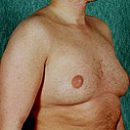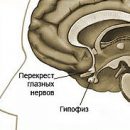The problem of obesity in childhood delivers many trouble to parents and children. The main reason for the development of obesity in children is an increased flow of energy with food. Physical activity, proper nutrition and diet, behavior modification are used in the treatment of children's obesity.
Content
Concept of childhood obesity
 In medical sources, obesity is defined as the accumulation of excess mass of bodily fat. On obesity can be said if the body weight is more than 25% fat in boys and more than 32% of girls. Although child obesity is often defined as a violation of weight / growth ratio, exceeding the perfect body weight by 20%, the thickness of the skin folds should be considered a more accurate indicator of the fullness.
In medical sources, obesity is defined as the accumulation of excess mass of bodily fat. On obesity can be said if the body weight is more than 25% fat in boys and more than 32% of girls. Although child obesity is often defined as a violation of weight / growth ratio, exceeding the perfect body weight by 20%, the thickness of the skin folds should be considered a more accurate indicator of the fullness.
Not all chubby babies subsequently turn into complete children, and not all the fastening children grow in the obesity of adults. Nevertheless, with age, the completeness is enhanced by both men and women, and there is a considerable chance that obesity that appeared in early childhood will accompany all his life.
Fullness and obesity cause a child a lot of problems. In addition to the fact that childhood obesity threatens to grow with age, it is the main cause of children's hypertension, due to diabetes of II degree, increases the risk of developing coronary heart disease, helps to increase the pressure on the joints carrying the weight load, lowers self-esteem and affects relationships with peers. According to some experts, the most serious consequences of obesity are precisely social and psychological problems.
Causes of development of obesity in childhood
Like obesity in adults, obesity in children is caused by a whole set of reasons, but the most important of them is the inconsistency of the energy produced (calories derived from food) and waste (calories burned during the main metabolism and physical activity) by the body. Children's obesity is most often evolving as a result of the complex interaction of dietary, psychological, hereditary and physiological factors.
Obesity are most susceptible to children whose parents also suffer over. This phenomenon can be explained by heredity or modeling of parental food behavior, which indirectly affects the child's energy balance. Half of the parents of primary school students never engaged in sports and avoid physical exertion.
Options for children's obesity
The goal of the treatment of obesity of children and adolescents is rarely loss of weight. They are rather focused on slowing down or stopping adding weight, which should allow the child with time to achieve normal weight. Previously, the right intervention is especially important. There are convincing evidence that the food and physical behavior of adolescents and children is easier to be corrected than adult behavior. The main three forms of interference have been developed:
- physical activity
- Food and diet
- Modification of behavior
Compliance with the formal training program or an increase in physical activity allows you to burn extra calories, increase energy consumption and maintain acquired. Most child obesity studies have shown that training does not bring a tangible result, unless they are combined with another form of intervention, for example, a dietary education or change in behavioral stereotypes. Nevertheless, fitness brings additional health benefits. Even if the body fat and body weight do not change after 50 minutes of aerobic exercises three times a week, such training improves lipid blood profiles and blood pressure.
Children are not recommended to starve or excessively limit calorie intake. Such a treatment strategy not only can cause stress, but also negatively affect the growth of the child and his perception «Normal» Nutrition. Balanced diets with moderate restriction of calorie consumption, especially reduced level of fat, are successfully used to treat children's obesity. Also should not neglect the diet education. Diet combined with fitness - Effective strategy for the treatment of children's obesity.
Many behavioral strategies that are used to treat obesity in adults, successfully apply to the treatment of children and adolescents. This is primarily self-control and dietary diary, slowing the speed of food absorption, time limit and place of food intake, the introduction of awards and incentive prizes for the results achieved. Particularly effective strategy of behavior with the participation of child parents.
Prevention of child obesity
Obesity is easier to prevent than to treat. Preventing obesity largely depends on parenting education. Mom must feed the baby to the chest, be able to determine when the child has been saturated, and also do not rush with the introduction of a todder of solid food into the diet. When a child is growing up, parents must provide proper nutrition, choose low-calorie products, try to avoid harmful fast food, develop physical activity skills, and adjust viewing TV programs. If preventive measures are ineffective or will not be able to fully overcome the influence of heredity, the priority of education should be the development of self-esteem and self-confidence.









